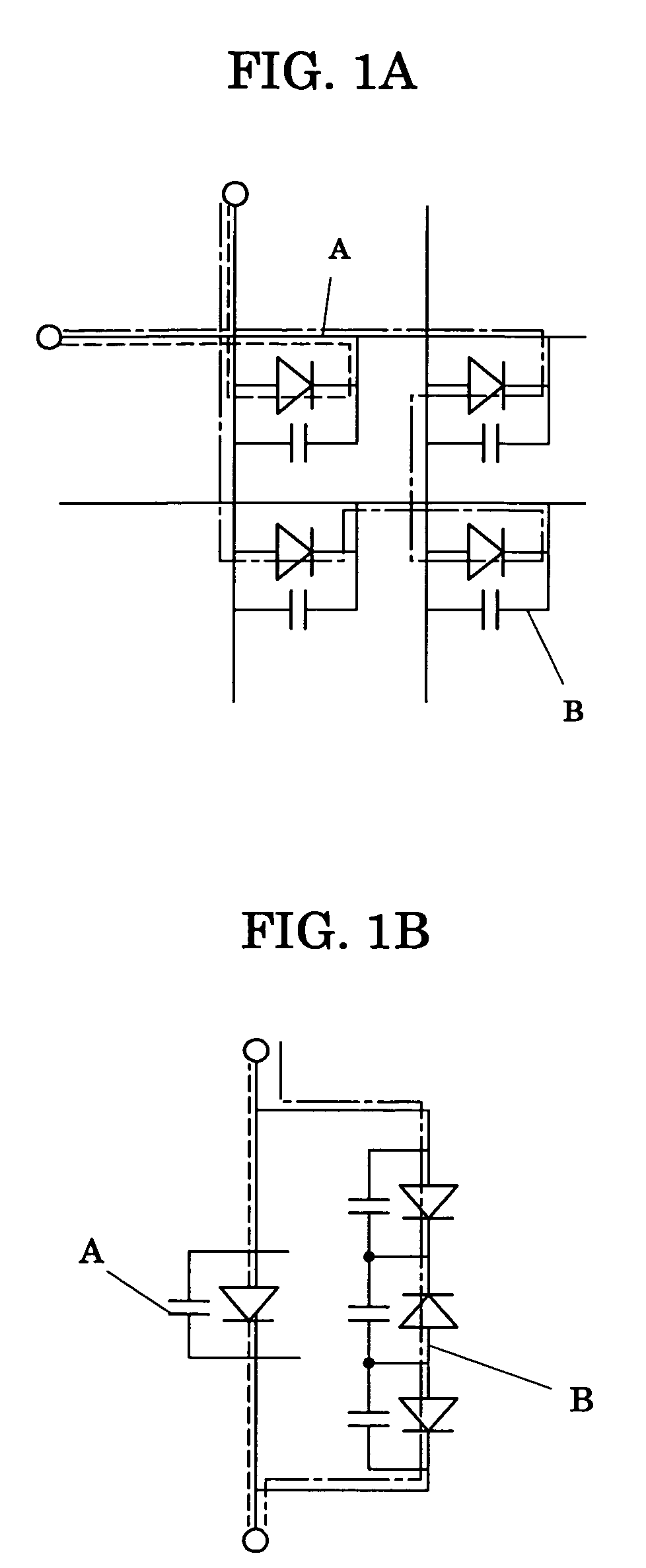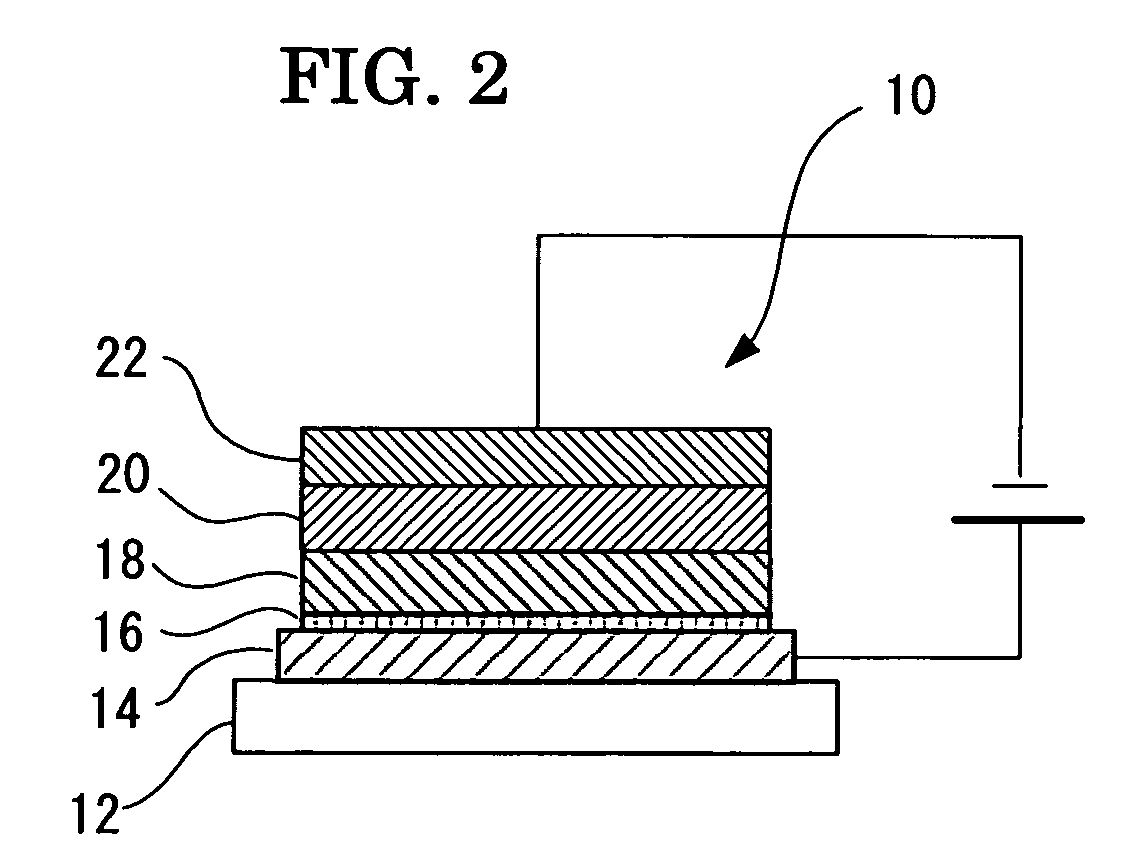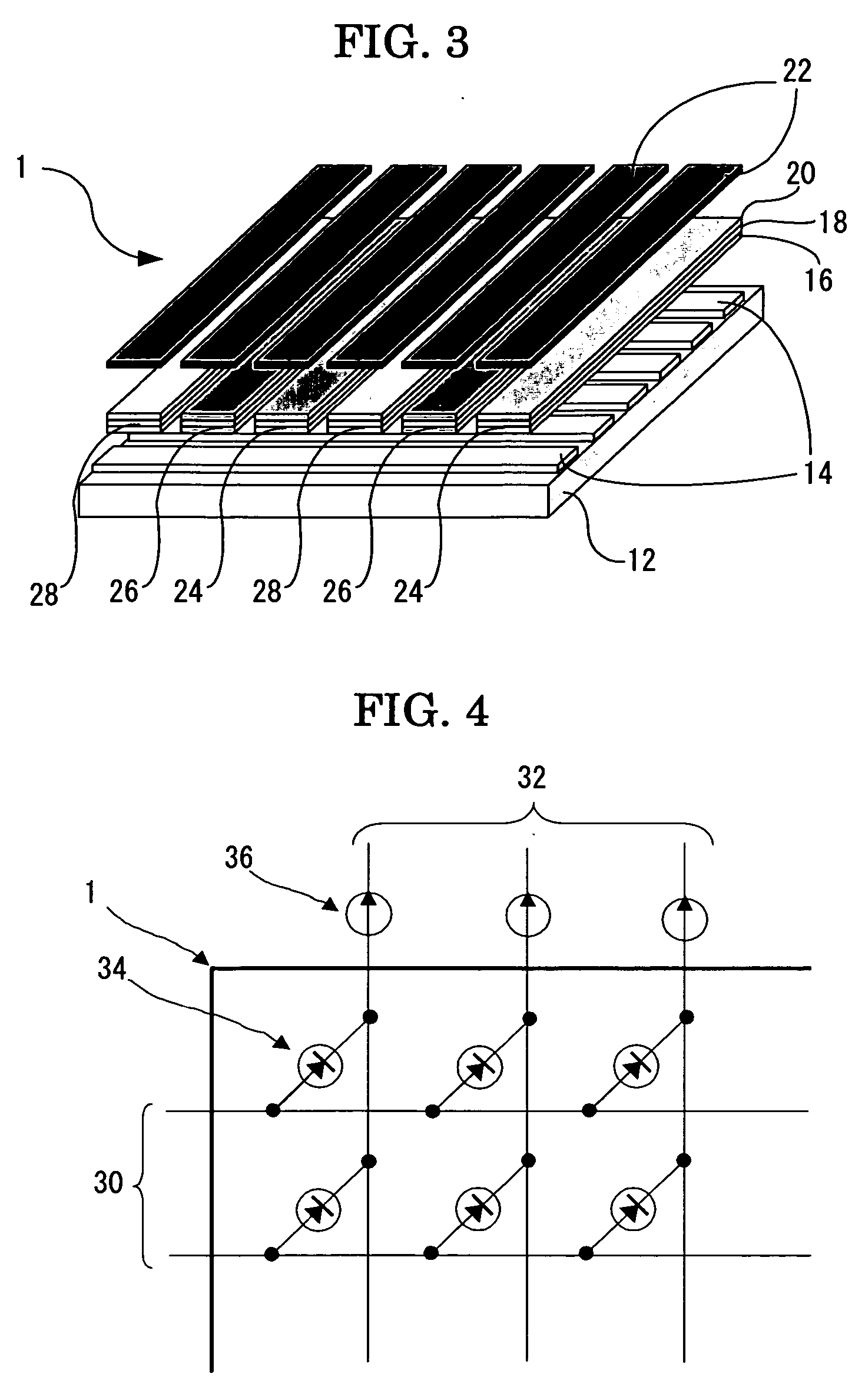Organic electroluminescent element, material for positive hole injecting layer, and organic electroluminescent display
a technology of organic electroluminescent elements and positive hole injection, which is applied in the direction of discharge tube/lamp details, natural mineral layered products, synthetic resin layered products, etc., can solve the problems of insufficient effect to increase the amount of injected positive holes, insufficient diode properties, and insufficient luminance, etc., to achieve superior luminance, lower voltage, and sufficient luminance level
- Summary
- Abstract
- Description
- Claims
- Application Information
AI Technical Summary
Benefits of technology
Problems solved by technology
Method used
Image
Examples
example 1
Manufacture of Organic EL Element
[0179] A glass substrate equipped with an ITO electrode was prepared as a positive electrode. The ITO electrode was subjected to ultrasonic cleaning in water, acetone, and isopropyl alcohol, then was subjected to UV ozone treatment.
[0180] An amine salt compound of perfluoropolyether (PFPE) expressed by the formula below (weight-averaged molecular weight: 4000, by SONY) was employed as a material for positive hole injecting layer. The amine salt compound was dissolved into a solvent (FC77, by 3M) to prepare a solution of coating liquid for positive hole transporting layer that contained 0.023% by mass of the amine salt compound. Then the positive electrode was dipped in the solution of coating liquid and pulled up in a raise rate of 100 mm / min thereby to form a positive hole injecting layer of 0.8 nm thick on the ITO.
R1—(CF2—O)x(C2F4—O)y—R2 [0181] in the above formula, x=20 or less, y=20 or less, y / x=1; R1 and R2 are represented by the following f...
PUM
| Property | Measurement | Unit |
|---|---|---|
| Thickness | aaaaa | aaaaa |
| Ionization potential | aaaaa | aaaaa |
| Molecular weight | aaaaa | aaaaa |
Abstract
Description
Claims
Application Information
 Login to View More
Login to View More - R&D
- Intellectual Property
- Life Sciences
- Materials
- Tech Scout
- Unparalleled Data Quality
- Higher Quality Content
- 60% Fewer Hallucinations
Browse by: Latest US Patents, China's latest patents, Technical Efficacy Thesaurus, Application Domain, Technology Topic, Popular Technical Reports.
© 2025 PatSnap. All rights reserved.Legal|Privacy policy|Modern Slavery Act Transparency Statement|Sitemap|About US| Contact US: help@patsnap.com



